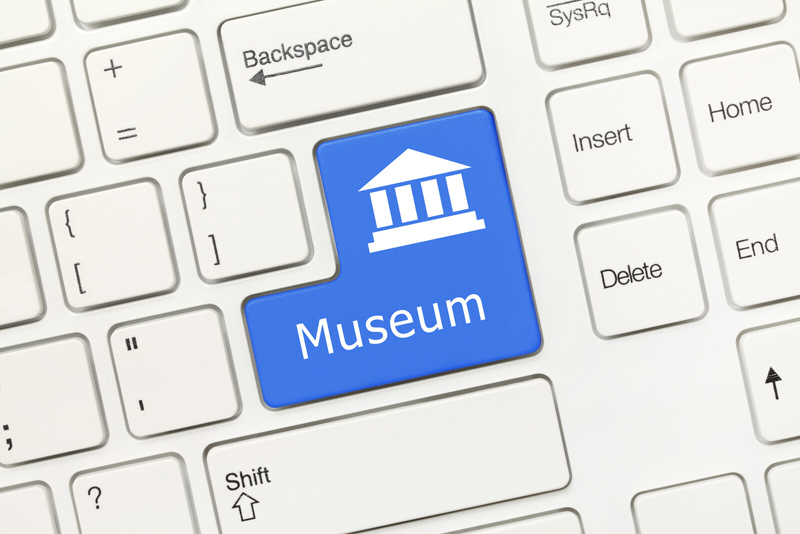
For museums and libraries that are the keepers of various cultural and scientific content, digitization of valuable resources offers the greatest opportunity to preserve and share the information with the public. Today, with advanced technology, digitization has become a priority for many museums to protect their collection from deteriorating and to improve accessibility. Therefore, many museums are associating with data conversion companies to digitize their collections. Digitization and publication of collections online can potentially allow access to your content across the globe.
Digitization of museum collections and resources is the process of developing digital representation of analogue objects. Creating a digital copy of the assets of the museum with the latest imaging techniques makes it possible to precisely digitize clear objects and their surroundings. The ability to create detailed 3D digital version of real-world objects and scenes can be useful for creating virtual experiences. It also protects valuable artefacts from any damage by natural disasters or human interventions and thus helps preserve the memory of the lost culture.
Reasons to Digitize the Collections of Museums
- Improved preservation: The most important reason for digitizing the museum collection is to preserve them for the future generations. It is important to have a proper digital strategy and the technical infrastructure in place to digitize these physical collections. Digitization is also an important part of preservation, when considering certain items in a collection, like analogue film. Converting old films from a physical format to its digital format ensures the preservation of the object in its original form.
- Better public engagement: Once the process of digitization is over, all the digital copies of the resources can be uploaded on the website or Internet. This allows the public to access these resources and enjoy them virtually. This helps to improve the profile of the museum and also attract more public to the place. With new technology, museums can now more easily reach whole new audiences, and the ease of access to digital content helps to determine the role that culture plays in people’s daily lives. These digital copies can also be shared on social media platforms to reach out to a greater number of people. This helps to develop an engaged online community where the public can share their feedback and also helps with design exhibition for a better experience. It also enables museums to come up with creative and innovative ways to display their collections to engage, promote and share among interested parties.
- Knowledge sharing: The digitized resources of a museum can be uploaded on the website so that the public can access them whenever they want. It allows scholars and students to easily access the resources they need, understand them and use them for their studies or research purposes. Having your collection accessible and searchable means you can share your knowledge and your data so that others can learn and benefit from it.
Cornell University Insect Collection Goes Virtual with Digitization
Corrie Moreau, director and head curator of the Cornell University Insect Collection, had included digitizing the collection of 7 million specimens in her to-do list. Supported by the National Science Foundation, digitization was encouraged with the objective to link biological collections across the country through a network of searchable databases.
Cornell’s collection, which began in 1871, had gathered around 200,000 species, making them the 7th largest in the world. Their collection includes butterflies, moths (Lepidoptera), dragon flies, ants and several other insects. Their large collection contains specimens from 150 to 200 years ago and it has been adding up till now.
To digitize these collections, Moreau along with students and other colleagues, is now taking high resolution images and making those available in real time through public repositories online. Moreau, an ant expert, has collections from her professor and author Vladimir Nabokov’s collection of “blues” – a group of blue butterflies he collected and wrote about in scientific papers. The collection also includes a giant Atlas moth, which has the largest insect wingspan, the bulkiest of all insects the titan beetle, and the giant stick insect.
They are digitizing these resources with the objective to preserve them as these provide a window to the past and are hard to replicate once lost. Moreau and her colleagues are planning to use a new sequencing technology to collect genetic material from museum specimens without damaging them. Earlier, scientists used to grind up an insect to sequence it. But today, non-destructive sampling techniques help to remove genetic material from a specimen’s innards, while leaving it externally intact so it can be returned to its pin and displayed.
The staff will attach a bar code tag next to each collection that can be scanned to know the relevant documentation about the insect. All genetic, microbiome and taxonomic data, images and other records from the Cornell collection will be made available using a publicly available database, known as the Global Biodiversity Information Facility. This allows any researcher to do a research on insects and other specimens easily. It also allows them to compare insects. Moreau considers digitization of all her data as a way to make people aware of the various insects.
Many heritage organizations like museums are now digitizing analog objects with the help of data conversion services into digital format. Digitization safeguards visual materials and converts them into machine-readable format that prevents them from deterioration. The digital paradigm shift is growing and there is no return to the analog world. Digitization opens up enormous market opportunity for every organization by preserving heritage materials.



